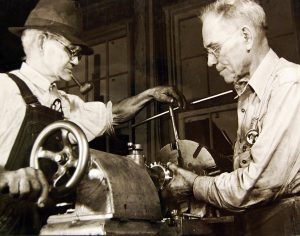- February 19, 2020
- Posted by: David Marshall
- Category: Management, Manufacturing, Productivity

As the labor market continues to tighten, and it’s getting harder to hire skilled and experienced labor, it will behoove managers to take a different view on hiring people over 65 on a consultancy basis. There’s a lot of experience sitting on the sidelines that’s not being utilized, and it’s contributing to the American labor shortage.
As companies look to even hire temporary staff, they’ll often pass over anyone who’s over 65. But these are some of the best people to look to. They bring decades of knowledge and experience, and if they’re former associates of that company, they have a lot of institutional knowledge as well.
 One practice I recommend is to hire retirees who still want to put in a few hours a week. For example, I used to call in some retirees if I had a high demand for a particular position, particular the higher skilled jobs, like maintenance. I probably added to their income by 30 or 40% that month, and it was not for very long periods of time, so they could still go home and stay retired.
One practice I recommend is to hire retirees who still want to put in a few hours a week. For example, I used to call in some retirees if I had a high demand for a particular position, particular the higher skilled jobs, like maintenance. I probably added to their income by 30 or 40% that month, and it was not for very long periods of time, so they could still go home and stay retired.
I would just approach them one on one and say “I’ve got a problem, would you be interested in helping me out? It might be one, two, or three weeks.” In every case they never turned me down. I was able to get the work done by someone who knew how to do it, I didn’t have to go through a months-long hiring process, and they got a chance to get out of the house for a little while and make some extra money.
Generally, the benefit of hiring the retiree is because they’re already trained and skilled, and they can train the unskilled people who are there. A 25-year-old won’t know as much as a 65-year-old (even if they think they do), particularly in the environment the 65-year-old operated in for 40 years.
An example
Let’s say you had to run an accurate inventory in your manufacturing operation. In manufacturing, everything will ultimately go through your inventory, whether it’s good or it’s bad. But if you don’t know what is there, how much is there, and where it is, you’ll end up repeating the same mistakes over and over and over again, and it will throw off your total inventory counts.
The trick to taking a proper and 100% accurate inventory is being very disciplined.
Normally, most people take an inventory and they aggregate the dollars without actually counting each of the items. They’ll say, “My perpetual inventory says I’ve got $2 million in inventory. The inventory I took says I have $1,999,999. So therefore that’s very accurate.”
But that’s not proper and accurate, because if you did the inventory by line item — and counted each item by hand and not by computer — then you would see the swings between nuts and bolts. That is, you want the same number of nuts for the same number of bolts — they have to match.
But if you aggregate your inventory, you could have twice as many nuts as you do bolts, but never know there’s a problem. At least not until you run out of bolts.
Doing that kind of inventory requires a real discipline, but in today’s manufacturing world, the younger generation of accountants often don’t go through that learning curve. It’s not part of their base training, because they’ve probably never had to do a hand count of a factory’s inventory.
In a case like this, it makes sense to have that 65-year-old retiree come in and do the training on a particular skill, job, or process. This way, your younger associates learn about these problems and how to avoid them. With time, they become the seasoned and knowledgeable veterans, and if you can keep them around long enough, they’re the ones who train the younger staff to come through.
I’ve been a manufacturing executive, as well as a sales and marketing professional, for a few decades. Now I help companies turn around their own business and solve any labor shortage. If you would like more information, please visit my website and connect with me on Twitter, Facebook, or LinkedIn.
Photo credit: National Museum of the U.S. Navy

